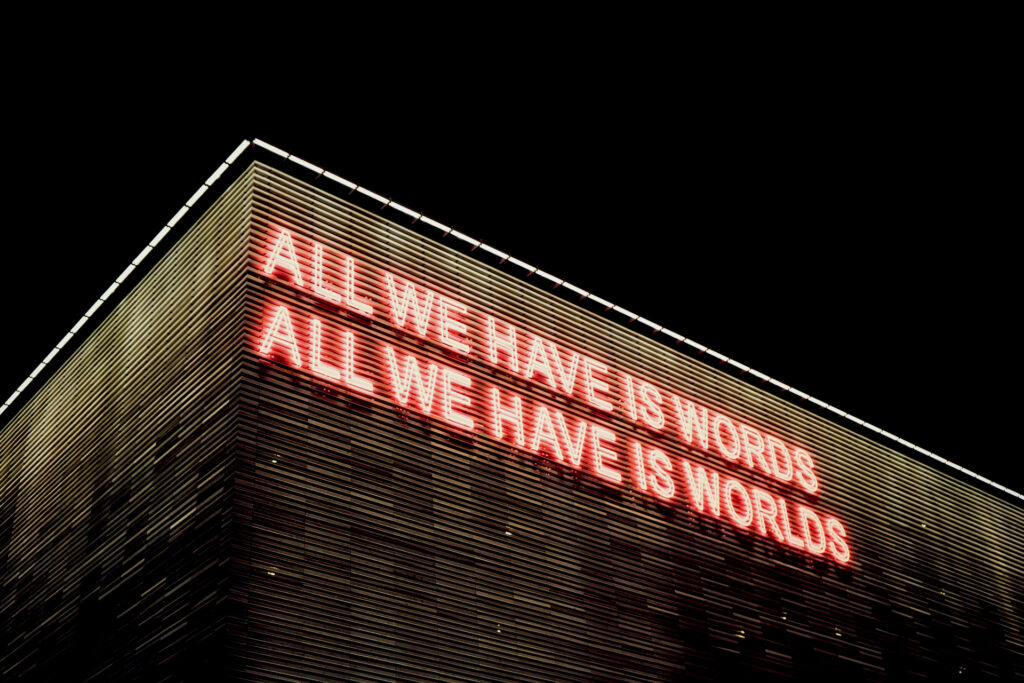An Enrichment of Collaboration and Understanding
A few days ago, a post crossed my timeline that touched on something I’ve been mulling over for years. It highlighted the benefits of multicultural collaboration and how language forms the backbone of successful partnerships across borders. For a long time, I’d been collecting observations, saving memes about international business negotiations, and reflecting on conversations about the differences between German, Dutch, and American business models..
Living in the Brainport region means witnessing this linguistic and cultural convergence firsthand. We’ve earned the moniker “Expat City”, because the greater Eindhoven area has exploded in recent years, largely driven by ASML’s magnetic pull on global talent. Walk down any street, and you’ll hear a symphony of languages: Chinese blending with Dutch, Korean mixing with English, Turkish punctuating Indian. Different tongues, different cuisines, different worldviews, all colliding in this compact corner of Noord-Brabant.
It creates a fascinating tension. On the one hand, we celebrate diversity. On the other, we grapple with a fundamental question: in the context of working together, how can a company, or, for that matter, an entire society, align all of this? The real issue isn’t how to smooth over these differences with translation, but how to leverage them as a cognitive asset. Language doesn’t just describe reality; it shapes how we perceive it, value it, and organise our society around it. It’s more than just words.
The Untranslatable: Windows Into Different Worlds
There are words in languages that have no direct translation. They describe concepts, feelings, or states of being that are uniquely rooted in cultural experiences. These words act as small windows into how a community thinks, feels, and relates to the world.
The Finnish language, for example, has over 40 words for snow. Not just “snow” with adjectives tacked on, but distinct terms for wet snow, crusty snow, snow that’s perfect for skiing, snow that’s dangerous for walking. Amazonian tribes identify far more shades of green than most other languages include; a practical necessity in environments where distinguishing between plant species can mean the difference between medicine and poison. In Japanese, the word “komorebi” describes the sunlight filtering through tree leaves, a phenomenon so valued it earned its own name.

These aren’t linguistic curiosities; they’re evidence of what a culture has deemed worthy of precise observation.
Identifying something and then naming it means learning to perceive and value differences, however subtle. If that distinction is ingrained in your culture, it’s not just linguistic; it’s a fundamental difference in worldview.
Consider the Dutch word “gezellig”. Translators reach for approximations, like cosy, warm, convivial. None capture the simultaneous physical, emotional, and social quality of atmosphere and belonging it describes. Or take “gunnen”, a concept invaluable in business frameworks. It combines goodwill, permission, and a sense of someone deserving their success. In Dutch business culture, you don’t just achieve success; gunnen is a part of this. It implies a fundamentally relational, consensus-driven approach.
France offers “terroir”, encompassing the soil, climate, topography, and practices that give a product its distinctive character. German gives us “Fernweh”: the ache for distant places. Spanish has “sobremesa”: the conversation after a meal when no one wants to leave the table.
Each encapsulates something unique to a way of life, a value system, a cultural operating system.
When Naming Becomes Power
In high-tech environments like at ASML, where machines are built that can produce chips with features measured in nanometers, the ability to name, categorise, and define minute differences isn’t just helpful; it’s existential. You cannot fix what you cannot describe. You cannot optimise what you cannot measure. And you cannot measure what you cannot name.
When multiple cultures converge, this precision can be lost, creating what I would call “fuzzy communication zones.” These are the spaces where friction emerges, where errors compound, or where brilliant ideas die because they couldn’t be articulated clearly enough to cross cultural boundaries.
But there’s also a critical flip side: when done right, linguistic diversity multiplies our perspective-taking capacity. A team that understands the German instinct for precise technical nomenclature, the Dutch pragmatism, and the English flexibility for rapid conceptual pivoting has a distinct advantage over a monocultural team. Precision plus practicality plus adaptability can create extraordinary resilience.
Same Words, Different Worlds
Sometimes the danger isn’t untranslatable words, but it’s words that translate too easily, creating a false sense of shared understanding.
Take the phrase “scaling up.” In US tech culture, this implies aggressive growth, rapid market capture, exponential curves. The underlying cultural framework is one of competition and market supremacy.
In much of Europe, particularly in the Dutch and German context, “scaling up” suggests something different: sustainable, controlled growth within existing regulatory and social frameworks. Stability over hyper-growth. Stakeholder impact considered beyond shareholders. The same English words. Entirely different mental models.

This difference can be a time bomb in transatlantic ventures. I’ve watched this play out in Brainport: one side operating on the assumption of gunnen (relational commitment), taking time to build a strong foundation; the other on an aggressive, transactional model of scaling up, wondering why it was going all so slow. Both sides feel betrayed, though no one lied. They simply operated from different cultural operating systems using identical vocabulary.
The Value of the Pause Paradox
In a pressure-cooker environment like Brainport, efficiency is worshipped. Every process is measured, every minute accounted for. We operate under the mantras of “minimum viable product” and “maximum efficiency.” But what if this monocultural approach leaves value on the table?
The Dutch have “niksen”; the conscious practice of doing nothing. Not meditation, not strategic thinking, but genuine, purposeless inactivity. From a pure efficiency standpoint, this seems absurd. Yet, the brain needs unstructured downtime to process, integrate, and make unexpected connections. French culture offers “flâner”; strolling aimlessly through city streets to observe. Spanish offers “sobremesa”. These aren’t signs of laziness or inefficiency. They are cultural technologies for restorative, non-linear thought and social cohesion.
Imagine a company institutionalising sobremesa, and making, for example, unstructured post-meeting time mandatory. It might discover that diverse teams build deeper trust and generate more well-rounded ideas than those driven solely by the Anglo-Saxon imperative of maximum efficiency.
Language, Empathy, and Market Strategy
This linguistic-conceptual difference has commercial consequences. The inability to grasp untranslatable concepts is a failure of market empathy. A company that only translates its messaging, rather than translating the concept of its value proposition, fundamentally misunderstands its customer.
Let’s consider terroir once more. To a French consumer, a luxury product emphasising its terroir, with its origin, authenticity, and generational practice, the delivery of a deep, high-value promise is expected. It speaks to a worldview where tradition and place are inseparable from quality. To a purely transactional market focused on specifications and price points, advertising the soil might sound like romantic nonsense, irrelevant to purchasing decisions.

Consider the Japanese concept of omotenashi: it’s the idea that hospitality anticipates needs before they’re expressed, rooted in selfless consideration. A hotel chain entering the Japanese market that simply translates “excellent customer service” has missed the point entirely. Omotenashi isn’t just better service; it’s a philosophical approach to the relationship between host and guest.
Marketing that ignores this cultural operating system will feel hollow, no matter how many focus groups approved the translated tagline.
Or take the Scandinavian concept of “lagom”; meaning not too much, not too little, just right. A product marketed as “premium” or “maximum performance” might actually repel Swedish consumers who value balance and moderation. The same product repositioned around lagom — optimal, balanced, sufficient — could resonate deeply.
If a tech company in Brainport is marketing a unique AI algorithm, it must find each market’s equivalent of these deep cultural concepts. Is its value in Germany precision and reliability, echoing “Ordnung” (order) and “Gründlichkeit” (thoroughness)? Is it in the US scalability and disruptiveness, speaking to the pioneer spirit and market dominance? In Japan, might it be about “wa” (harmony) and how the technology integrates seamlessly without disruption? In the Netherlands, does it align with “nuchterheid” (pragmatic levelheadedness)?
Marketing that succeeds across cultures doesn’t just translate words; it translates value systems. Companies that fail to do this don’t just lose sales; they fail to build the trust and cultural credibility necessary for long-term market presence. The graveyard of failed international expansions is littered with brands that assumed their value proposition was universal, only to discover that value itself is culturally constructed.
From Translation to Transformation
So how do we bridge these gaps?
The answer lies in moving past communication toward what I’d call conceptual assimilation: creating an organisational culture that actively seeks out, preserves, and leverages the mental models embedded in different languages.
The value emerges when the Dutch team teaches the American team the concept of gunnen, helping them see why relationship-building is essential infrastructure. When the American team shows the German team the proactive, risk-embracing mindset embedded in their notion of scaling up. When the Spanish team introduces sobremesa as legitimate space for trust-building.
This is conceptual leverage: using linguistic diversity not just to communicate, but to multiply the number of valid perspectives a team can access when solving problems. Each linguistic concept becomes a tool in a larger cognitive toolkit.

But let’s be clear: this is hard work. It requires organisations to slow down when every instinct screams to move faster. It demands that leaders sit with ambiguity and resist the urge to standardise everything into a single cultural model. It means accepting that meetings might take longer, that consensus might be harder to reach, that the path forward won’t always be linear.
The companies and teams that succeed at this aren’t doing something mystical. They’re doing something deliberate: they’re hiring not just for language skills but for cultural fluency. They’re creating space in agendas for the kind of unstructured interaction where different mental models can surface and be examined. They’re rewarding managers who can code-switch between cultural operating systems, not just those who drive the hardest toward quarterly targets. They’re building feedback loops that catch cultural misunderstandings before they solidify into organisational dysfunction.
This isn’t about eliminating tension; cultural differences will always create friction. It’s about treating that friction as a feature rather than a bug, as the productive discomfort that signals you’re accessing genuinely different ways of thinking rather than just variations on the same theme.
Words to the Future
The future belongs not to those who communicate most efficiently, but to those who can think in multiple conceptual frameworks at once. The challenge for Brainport and similar hubs is whether they treat linguistic diversity as a problem to be managed, or as a competitive asset to be leveraged.
The words we don’t have in our native languages aren’t gaps. They are invitations to expand our Cultural Operating System. The challenge for organisations in places like Brainport isn’t merely to translate, but to embrace this conceptual leverage, ensuring the future belongs to those who think with a truly multilingual mind. Not because it’s easier — it isn’t — but because the problems we’re trying to solve demand nothing less than the full range of human cognitive diversity.
https://www.linkedin.com/pulse/linguistic-differences-cultures-roland-biemans-ytq8e

Comments are closed